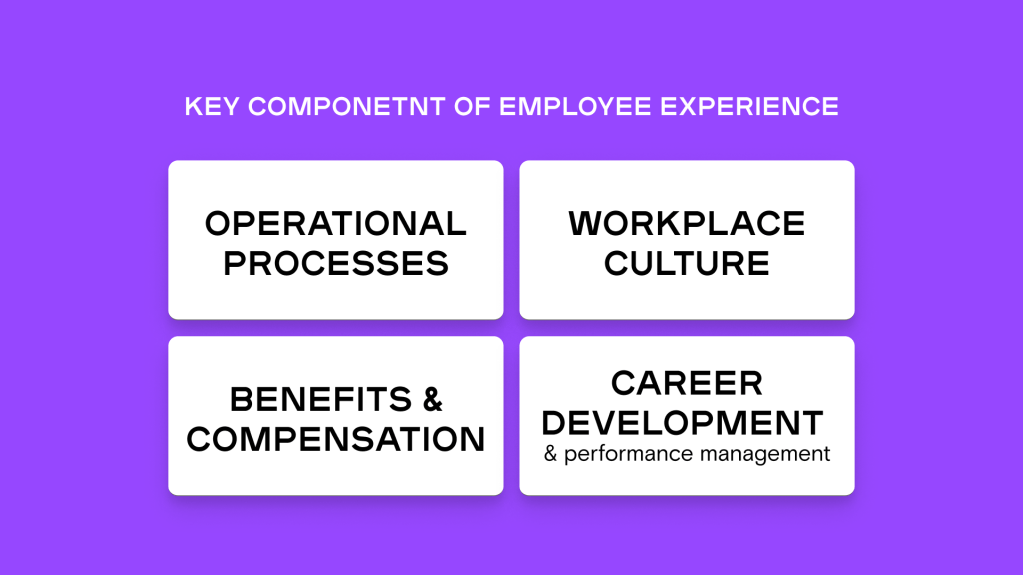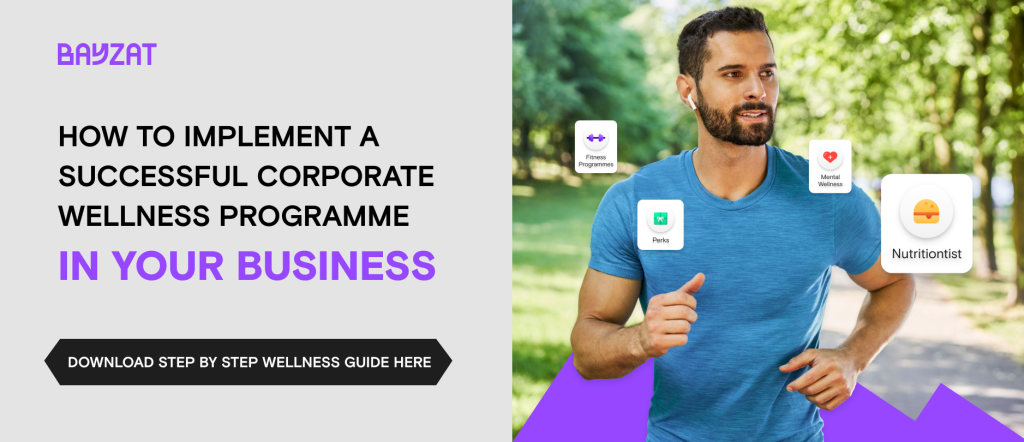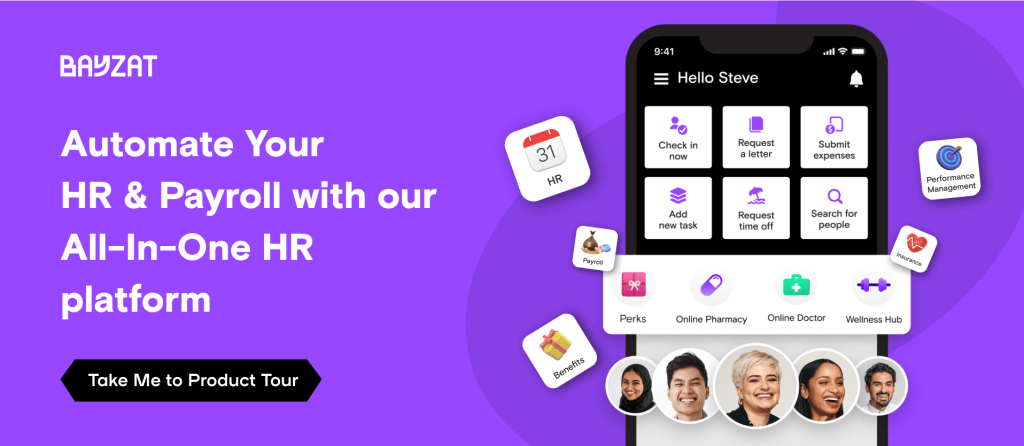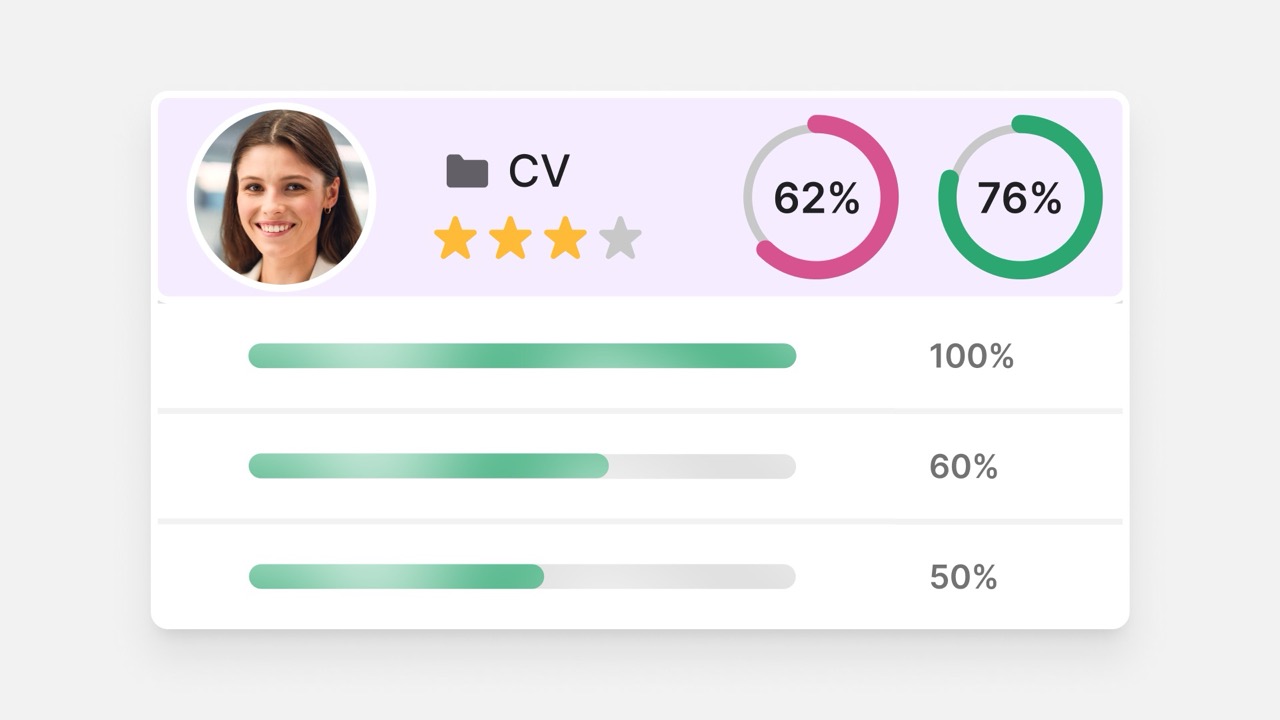Most businesses know that customer experience is a vital step toward business success. But employee experience can be just as crucial – if not more.
What is Employee Experience?
Employee experience encompasses many aspects of the staff’s everyday life. The experience begins with recruitment and carries on until the person leaves or retires from the business. Employees will engage, perform and grow during their time at the organization. This is related to the physical, cultural, and digital environments of businesses.
Unfortunately, employee experience is not always at the heart of a business’s operational goals.
This guide to the employee experience will talk about the importance of understanding what the concept means, the key concepts it entails and the different strategies your business can use to enhance employee experience.
The Importance of Employee Experience
Employee experience can play a crucial role in keeping employees satisfied at work. For example, 71% of UAE-based HR professionals think the pandemic increased employee expectations, especially around health and wellness benefits. Employees are looking for a meaningful connection at the workplace. If they don’t find the experience positive, they don’t have any problems moving on. The competition for talent is heated.
Key Components of Employee Experience

It’s easy to talk about the importance of employee experience. But what does it look like in action? Knowing the key components of employee experience can help unlock the advantages. Four major building blocks exist to how your workers will view the workplace and navigate the operational framework.
1. Operational Processes
How your business does business is naturally at the heart of employee experience. The overall HR system is the experience you need to focus on the most. You need to understand elements like:
- What is recruitment like?
- How are employee issues dealt with?
- How do the different HR processes work, from time management to employee benefits?
The goal is to streamline how your HR works in conjunction with other departments. You don’t want processes such as payroll to be separate from the overall employee experience. You can create a transparent and practical framework if these processes work without friction.
Digital tools and platforms can aid with operational processes. Technology makes it easier to involve different stakeholders and makes employees feel part of the system.
Take payroll as an example. A digital platform can help engage your employee with the mundane process. Employees can be in charge of checking data and correcting possible errors. They will also see how the payroll works, making it a more transparent system. All of this will help boost employee engagement and improve the overall experience.
2. Workplace Culture
Your workplace culture plays a vital role in employee experience. You should build an inclusive and supportive environment to guarantee all employees feel welcome. Inclusion is essential, especially in a multi-cultural workplace like many UAE workplaces. Ensuring the culture and those operational processes understand and value different types of employees is vital.
Healthy workplace culture also understands employee well-being isn’t just about the workplace. Employers can sometimes be blindsided in thinking that the workspace is all that matters. But you can miss the bigger picture if you’re all about work and only promote a work-related approach. Employees who are healthier and happier outside the office will also be more comfortable and productive at work.
Your employee experience must promote work-life balance. You want employees to have a meaningful life, not just a fun workplace.
3. Benefits and Compensation
Compensation is a big part of the employee experience. While it’s vital to understand that many employees aren’t all about money, getting fair compensation for the work can significantly contribute to workplace happiness – or lack thereof.
In one of our surveys, 46% of workers said that the Covid-19 pandemic made them reappraise the value benefits on offer, with nearly two-thirds unhappy with their current benefits package.
Keep in mind that compensation isn’t just about the daily salary. You can make your compensation scheme more attractive with a comprehensive benefits package. This means focusing on bonuses, holiday pay, health insurance and pension packages. If these are competitive and tailored to employee needs, you can be more competitive in the market.
Overall, ensuring your benefits and compensation address employee expectations and needs is crucial. So ensure you understand what are the elements your employees are looking for and find ways to address those.
4. Career Development and Performance Management
Last but by no means least, career development and performance management are significant elements of employee experience. You want to provide your staff opportunities to enhance their career and skill set while engaging them with performance management.
Digital performance solutions are a magnificent way of achieving both goals. Digital tools can help with training and talent development through different programs and tools. You can also implement tools that help with performance management.
These continuous learning and growth opportunities, supported by the best performance monitoring tools, can help engage employees and make them feel more connected with the workplace.
“The employee experience is the foundation of a strong employer brand and plays a crucial role in attracting, engaging, and retaining top talent.”
– Jacob Morgan, author and employee experience expert
Strategies for Enhancing Employee Experience

The above components are essential for employee experience. If you set them in place, you can keep your employees engaged, provide them with positive experiences, and improve their productivity and work input. But what are the best strategies for ensuring the employee experience is meaningful and consists of those building blocks?
Here are four key strategies your business should keep in mind:
- Establish a scalable framework
You can’t – and don’t have to – achieve everything at once. Employee experience isn’t something you must build overnight. You want to create a framework that is flexible and approachable. You can then build on top of the framework as your business grows and develops.
So what are the building blocks of a scalable framework?
You should embrace a digital-first mindset. Technology is excellent at boosting the employee experience and helping with each core element we’ve discussed. With the right tools, you can promote employee engagement, support employee talent acquisition, and keep operational processes easy and accessible.
Look at the different parts of your business and find digital tools to support those processes. You can find plenty of options, from communication platforms to HR software. Digital-first mindset will help prepare your employees and the business for any eventualities. It can unleash talent and growth in different ways, empowering your workforce to achieve goals.
Slack has written an interesting post about the building blocks of a digital-first mindset. In the article, they establish the five pillars of the mindset. These are:
- Vision and strategy where technology supports company goals, with technology reflecting your overall mission statement.
- Emphasis on core business processes and finding ways to use technology to streamline these operations.
- Improving customer and employee experiences, alleviating any pain points you might encounter.
- Metrics and iterations are used to help track the results of your objectives and goals.
- Collaboration and communication to boost employee engagement, customer service and productivity.
An excellent scalable framework should also put policies at heart. You don’t want to change employee policies regularly or be inconsistent with your policies. Take enough time to determine the type of policies you want to set and how you’ll enforce them across your organization.
- Empower employees to perform
Performance empowerment can help enhance how well employees enjoy their time at the workplace. If you can make the essential work processes frictionless, you can help the staff have a better time tackling their tasks.
The digital-first mindset has a significant role to play. You want to provide tools and resources to ease fundamental processes and tasks. For example, if payroll management is easy and requires less effort, you can instantly create a happier workforce. Your staff will get paid on time and without errors, without engaging your employees in mundane and mindless tasks.
By removing obstacles away from task management, you reduce employee workload and unleash their focus on more practical tasks. If you take the payroll example, you can see this in action. Your HR and finance department doesn’t have to manually take care of payroll information because it is automated to most parts. This allows your HR professionals to tackle more important tasks, such as onboarding.
Performance management should also aim towards improving employee well-being and work-life balance. You want to have systems in place that make it easier for employees to separate work from personal lives. Employers should consider flexible work arrangements, for example. Studies show how WfH policies have the power to transform the workplace and lead to happier employees.
- Enable career development
Career development should be a core strategy for your business. The reality is that with a highly talented workforce, you can achieve bigger and better things. You should always hire the right talent but also understand that all mastery requires refining and fine-tuning.
Modernizing performance management with technology is a great start. You should use tools like Bayzat’s performance management software to gather data, analyze it and use it to create better frameworks for employee engagement.
You should also offer personalized development paths and coaching to your employees. Every employee is different and might have different strengths and weaknesses. You want to ensure they get to develop those skills accordingly. It’s also worth remembering that your organization’s needs will also be in flux. You want to have opportunities to develop talent in-house when the need arises.
It is essential to utilize third-party opportunities for talent development. There are lots of online courses you can advise your staff to take. You should also use mentoring as a tool. Your employees should create mentorship programs that allow them to support other staff members while getting the necessary support.
- Measure and improve the employee experience
Finally, it is vital to start measuring employee experience. You soul regularly collect employee feedback and gain their insights into what’s happening within the organization. Many employee performance tools allow you to create customized surveys to help better understand employee pain points.
There are many ways to collect customer feedback. It is essential to focus on the key points that are:
- Regularity – you should seek out opinions on a regular basis, from monthly to annual feedback reports.
- Consistency – the feedback you ask for should follow a consistent pattern. This makes it easier to monitor changes in the employee experience.
- Transparency – while feedback should sometimes be anonymous, the framework for giving and receiving feedback should always be transparent. You want staff to know what happens with the input and be open about the actual opinions you’re receiving. This builds trust and generates better feedback in return.
As you start receiving feedback and insights into the employee experience, you want to use this data to improve. Create a system of improvements and initiatives that takes employee engagement data as the basis for decisions.
Let’s say you notice that there are issues with productivity, for example. You want to look into the experiences of those workers that have higher productivity and those that have lower levels. You might find out that flexible work arrangements boost productivity for some but not others, and so on. Use the data to improve employee engagement models and create a better employee experience.

Employee Experience Examples
Below are a few examples and case studies that reveal how Bayzat’s employee benefits platform contributes to enhancing the employee experience.
The Giving Moment Case Study
The Giving Movement, a global fashion company, faced challenges managing their rapidly expanding remote team. Their employee count grew from 30 to over 160 in just a year, necessitating a robust HR system that could integrate with a Payroll solution. Bayzat stepped in with a tailored insurance solution for their UAE employees and an all-in-one platform to manage HR, Payroll, and Insurance processes. The platform’s user-friendly design and ability to integrate medical insurance and employee benefits have significantly improved the company’s employee experience and engagement.
Securitas Case Study
Securitas, a global security services provider, faced challenges in managing employee data and improving their HR processes. Partnering with Bayzat, a leading HR and employee benefits platform, Securitas implemented a comprehensive suite of solutions.
Bayzat’s centralized platform streamlined HR operations, enabling automated processes for attendance, leave requests, and payroll. Employees gained self-service access to update information and request time off, resulting in increased employee satisfaction and engagement. Real-time data and analytics provided insights for informed decision-making, optimizing resource allocation and workforce planning.
Securitas experienced improved productivity, data accuracy, and overall employee satisfaction, solidifying their position as an industry leader.
Read More : Bayzat’s Case Studies
Conclusion
This guide to the employee experience has showcased the importance of the proper framework. The modern worker wants to feel appreciated and engaged at work. If they don’t find the workplace meaningful and supportive, they will wait for the right time to exit. With 56% of professionals stating in 2022 that they were planning to change jobs, if companies fail to meet their expectations, organizations simply cannot overlook this.
The good news is that 92% of organizations prioritise employee experience over the next three years in the UAE. This is compared to just 52% before the pandemic. The above guide will help your organization do just that and direct the focus on things that matter.
So take note of these strategies and tips and download the UAE Employee Voice Report for further insights. The report has information on enhancing employee experience and making the most of performance management.

FAQs on Employee Experience
What is the employee experience(EX)?
Employee Experience (EX) refers to the journey an employee takes with a company, from recruitment and onboarding to development, performance, and eventual exit. It includes every interaction an employee has with the company and how these experiences shape their perceptions, engagement, and overall satisfaction at work.
Why is employee experience important?
Employee Experience is crucial as it directly impacts employee engagement, productivity, and retention. A positive EX can lead to increased job satisfaction, improved performance, and higher employee loyalty. On the other hand, a negative EX can result in low morale, poor productivity, and high turnover rates.
How to improve the employee experience?
Companies can improve their Employee Experience by focusing on areas like creating a positive work environment, providing opportunities for career development, offering competitive compensation and benefits, and implementing effective communication channels. Utilizing technology, like digital platforms and apps, can also enhance EX by streamlining processes and promoting flexibility and autonomy.








Get Social